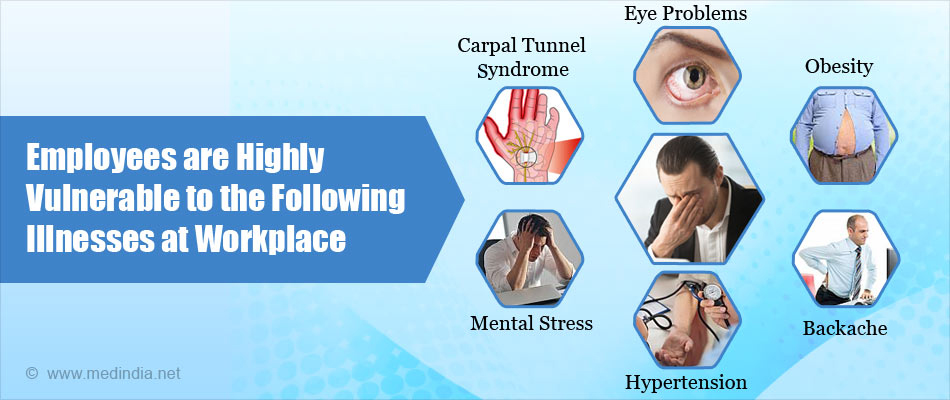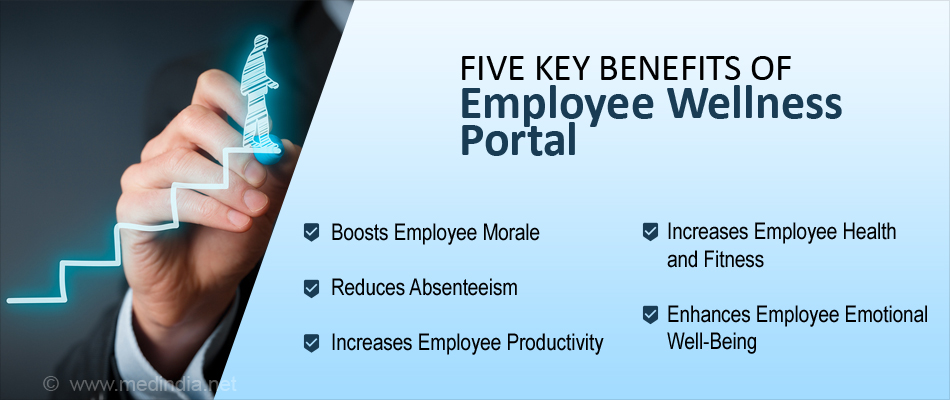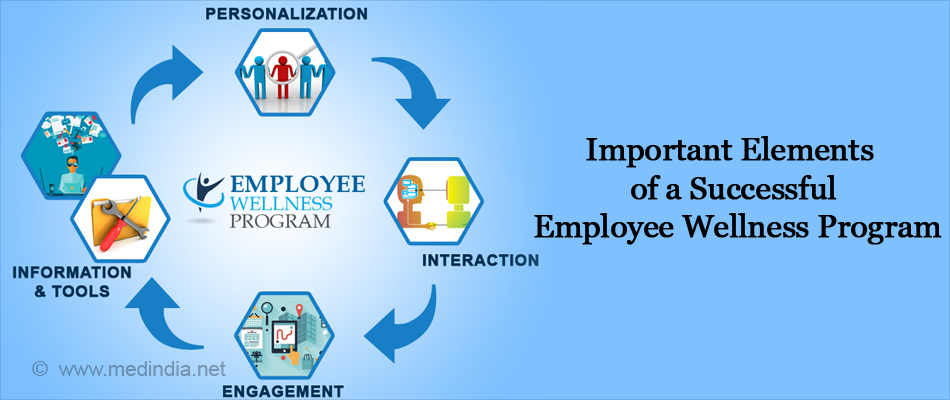- What’s the Hard Return on Employee Wellness Programs? - (https://hbr.org/2010/12/whats-the-hard-return-on-employee-wellness-programs)
- Workplace Safety & Health - (https://www.cdc.gov/features/workplacesafety.html)
What are Corporate & Workplace Employee Wellness Programs?
Today there is a growing trend among companies worldwide to implement employee health and wellness programs – also known as Corporate or Workforce Health & Wellness Programs and Portals. Corporate Human Resource managers everywhere are increasingly focusing on integrating employee health and wellness programs and portals as a part of the employee benefits package. So, what are Corporate Employee Wellness Programs and what do they consist of? And why do organizations need to focus on employee health and wellness?
It is quite clear that for a company to be successful its employees and workforce must first be healthy and productive. There is a cost to employee ill-health which eventually boils down to poor performing organizations. Business outcomes of employee ill-health, include higher absenteeism, lower job satisfaction, higher attrition and lower work productivity, and high health care costs.
Creating a healthy workplace results in happy and confident employees, work environment being one of the most important factors for employee retention.
Employee wellness refers to the overall state of physical, emotional, social, intellectual, spiritual and psychological well-being of all employees of a company. In general, as we know good health requires an individual to make healthy lifestyle choices and take full responsibility for actively engaging in and managing their own health. This is a process that requires ongoing health education, health assessment, setting goals and taking action. It starts with periodic assessment of health and risk factors, awareness and education about health topics, setting goals and taking action by making changes in lifestyle, diet and exercise regimens to address any health issues. When all of these steps taken together are made part of a cohesive health and wellness program for employees, a company benefits greatly by building a healthier and more productive workforce.
With the increasing number of white collar jobs, employees are exposed to increased mental stress and lack of physical activity that keeps them glued to their desktops, computers and mobile phones. “Burnout is the biggest occupational hazard of the 21st century,” says stress expert and author Christina Maslach. Increased stress at the workplace is known to impact productivity, employee morale, and results in a high number of medical claims and a high rate of absenteeism. Earlier, the focus was on physical occupational hazards, resulting from hazardous work conditions. Today, however occupational hazards for employees are not physical, but mental and emotional – and in fact have taken a much bigger toll on the health of white collar employees working in physically safe, fire proof, and air-conditioned environments.
Employee and Workforce Wellness Programs are implemented to promote health and fitness, not just among corporate employees, but also among their families, thereby focusing on their overall, physical, mental and psychological wellbeing. As part of many of these programs, employers often offer health education and awareness workshops and sessions, make ergonomically driven changes in seating and lighting, offer discounts on gyms and fitness club memberships, organize health screening sessions and offer incentives to motivate employees to focus on improving their health.
Learn more how an employee wellness portal benefits your orgaisation
Why do Organizations need to Focus on Employee Wellness?
Stress at work affects the likelihood of heart attack. Sitting at the same place all day is equivalent to smoking a pack-and-a-half of cigarettes, as per Kellogg Foundation.
There is a cost to ill-health. Organizations weigh employee ill-health in terms of cost, because for an employer, an employee is a resource of productivity. Ill-health decreases an employee’s efficiency, dedication and motivation. Employers classify this cost as:
- Direct costs in the form of an employee’s salary paid for sick leave, overtime incurred by other staff compensating for the absent employee, last minute arrangement for a substitute or temp worker at a higher cost or loss of a project owing to delay or non-performance.
- Indirect costs in the form of absenteeism, reduced productivity, poor customer service, repeated training of new workers hired to scale up performance to the level of an absent employee.
What Makes Employees Vulnerable to Illness?
- Employees become highly vulnerable to repetitive stress injuries owing to continuous working on desktops/laptops, or they might develop ear or eye problems due to continuous exposure to high range stimuli like repetitive strain injuries, osteoarthritis and carpal tunnel syndrome.
- They usually develop musculoskeletal problems due to continuously sitting in the same posture for hours. They might develop osteoarthritis, obesity, frozen shoulder, back ache and so on.
- High stress jobs often result in mental health conditions among employees.
- Lifestyle disorders like diabetes, hypertension, cancer, cardiac ailments, metabolic disorders have become more common since employees have very unhealthy eating patterns and no time for physical exercise routines.

A great majority of work-related diseases are caused by one or more of the following six easily modifiable behaviors:
- Smoking
- Physical inactivity
- Poor diet
- Poor hygiene
- Insufficient sleep
- Lack of health screening
What are the Benefits of Corporate Employee Wellness Programs?
Organizations have realized the benefits of a well designed and run corporate wellness program. Introducing these programs in hectic day-to-day schedules of employees help organizations create a positive, happy, and productive workplace. The many benefits include:
- Reduction in employee absenteeism
- Lower healthcare costs due to reducing number of health insurance claims and hence lower policy renewal premium costs.
- Increase in employee retention
- Increase in employee productivity
- Highly motivated employees

These programs do not just benefit employees in their professional life, it also helps in maintaining an employee’s confidence and health behavior in other spheres of life. They include:
- A reduction in stress, anxiety and depression
- Higher energy levels
- Improved memory
- Improved weight management
- More restorative sleep
- Improved immunity
- Enhanced emotional stability
- Mental calmness and peace
- Improved cardiovascular health
Why do some Employee Wellness Programs Fail to Deliver Results?
However, in spite of significant investment in Corporate Wellness Programs for employees, many organizations do not often realize the full benefits and nor do they achieve the desired results of a healthier workforce. So, where are these organizations going wrong? The real problem is that in spite of the best intentions many Corporate Employee Wellness Programs do not have a mechanism where employees are engaged and motivated in managing their own health. Just a health session or a mere fitness gadget or a mobile app is not sufficient to drive employees to the path of a healthy lifestyle. To become healthier – one has to assess current health, get educated about risk factors, get ongoing updates, create an action plan, set goals and most importantly make the necessary changes in lifestyle.
What are the Elements of a Successful Employee Wellness Program?
A well knitted wellness program offers smoking cessation sessions, weight loss tips and activities, stress management sessions like yoga and meditation, access to the organization’s gym or discounts on premium gym memberships, company-sponsored sports activities, preventive health screenings and vaccinations. It also includes informative sessions on improving posture at work, cancer prevention, diabetes regulation, managing hypertension, and so on.

While designing an employee wellness program, it is really important for the HR manager to focus on following important points:
- Creating Awareness - Rather than just getting health sessions arranged for employees, it is more important to provide a platform to the employees so that they can get curious about their health, their behavior, their environment. This can only happen by providing access to a self managed online/offline health library, where employees can gather needed information and resolve some of their health queries.
- Chronic lifestyle diseases are preventable, so identify risk factors early to prevent them - Illnesses including heart disease, stroke, cancer and obesity are preventable by lifestyle management. Behaviors cannot change overnight. It starts with awareness and education. If an employee is made aware of the risk factors based on a self-risk assessment of their current health and lifestyle, that would make them more receptive and engaged in managing their health and taking preventive action.
- Employee wellness program be interactive to increase engagement - These programs need to be designed to follow the best practices to improve engagement – these include interactive tools and calculators, ongoing news and updates on topics directly relevant to the employees, quizzes to test knowledge, tools to set goals and reminders and ask questions and get answers from experts.
- Minimize Information Overload - One of the major barriers to creating a wellness environment in the organization is lack of reliable information on health issues. Now-a-days people read too much conflicting information online with no easy way to determine the best course of action. The solution is a curated feed of news and updates that are relevant to the employee’s specific health condition or interest. This minimizes noise and information overload.
- Incorporating health risk assessment - Health assessments done by asking questions about an employee’s behavior, physical activity status, diet preferences and stress management techniques coupled with biometric screenings of blood pressure, cholesterol, height/weight, blood glucose levels, provide an awareness to employees, as well as the employer on where they stand and which direction they need to drive their focus.
- Leadership involvement - A successful employee wellness program begins with commitment from the organization’s leaders.
A successful Employee Wellness program often consists of a Corporate Wellness Portal that provides an online, interactive platform where employees can register and login to do a self-risk assessment, get informed about risk factors, get news and updates relevant to their health, create an action plan, set goals and actively engage in managing their own health.










